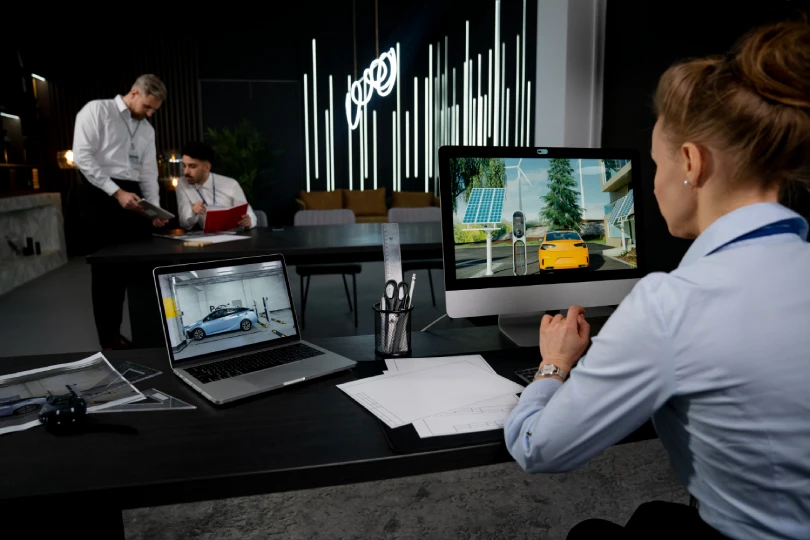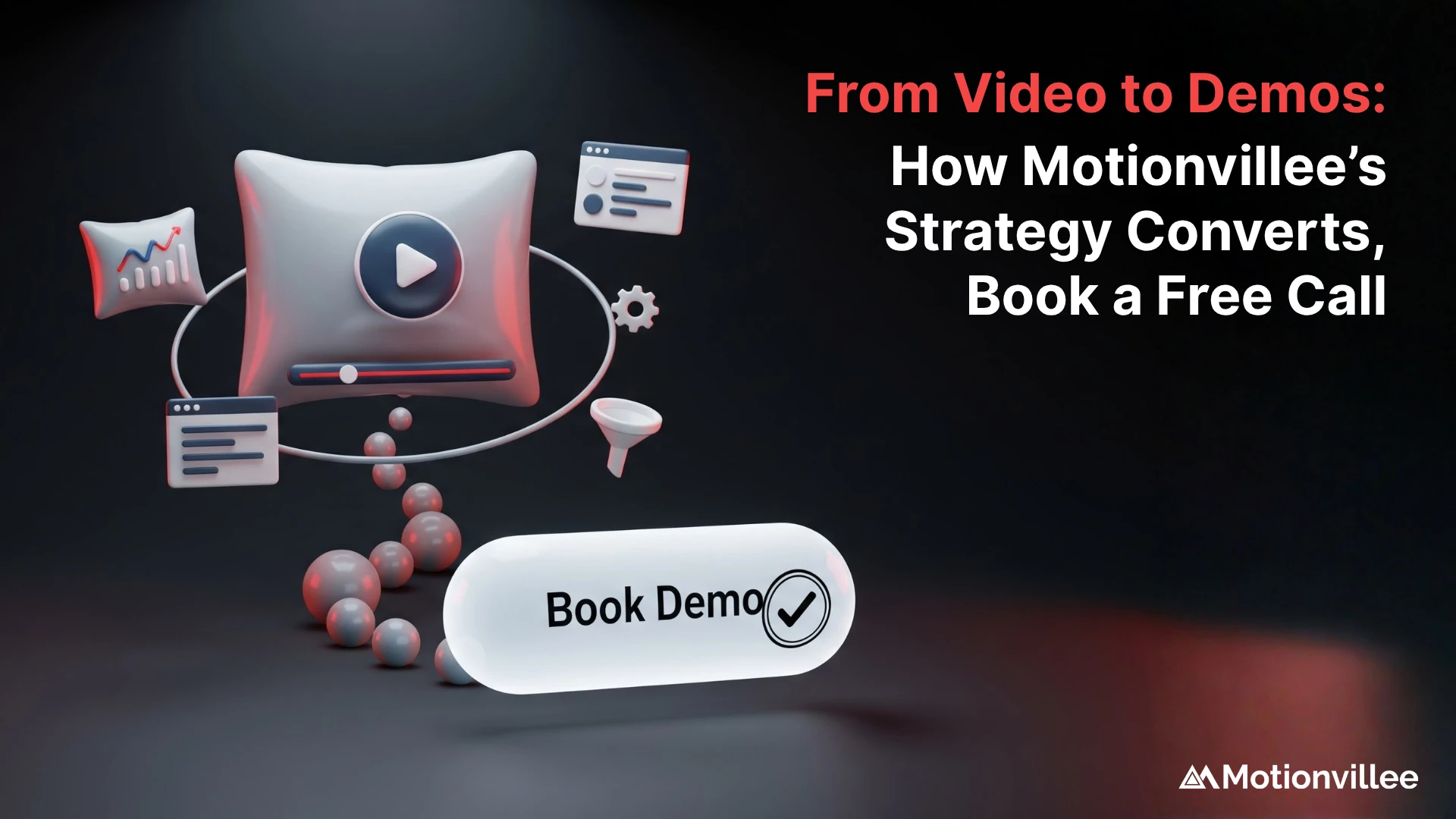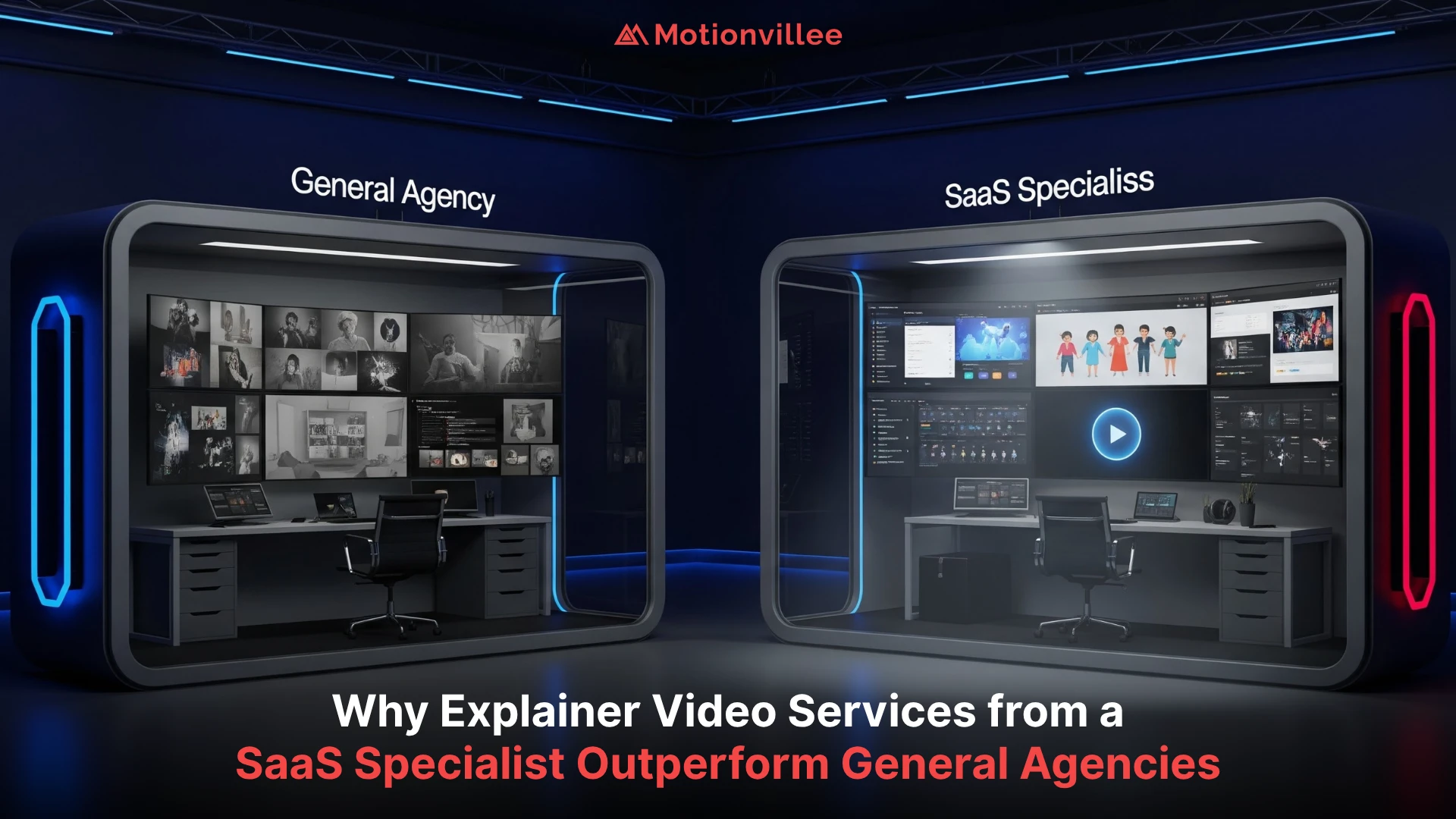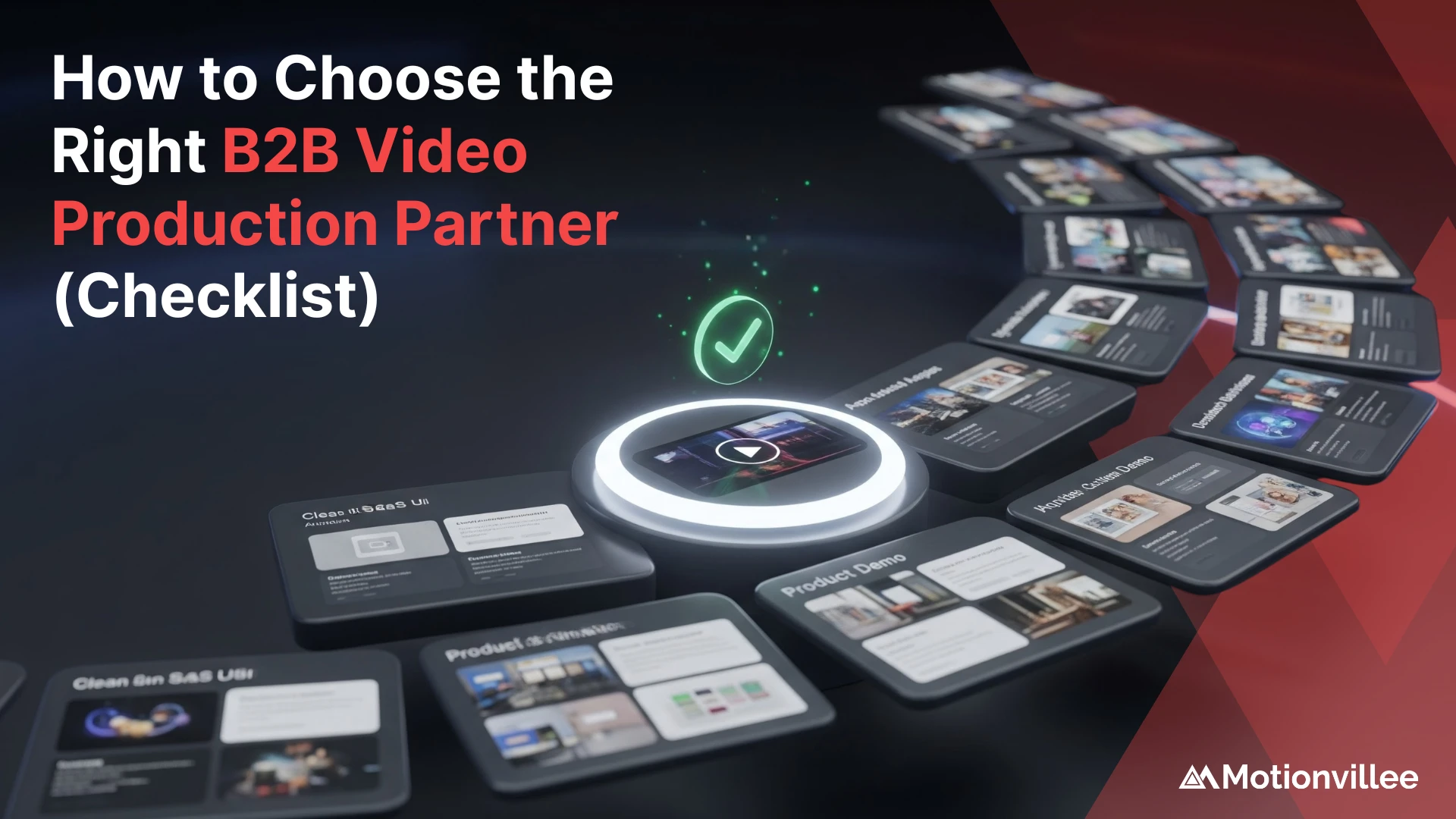Video has moved beyond being just a format. It’s now how modern brands communicate, differentiate, and stay relevant. In 2025, the landscape is more crowded than ever. Attention is limited. Choice is endless. The brands that win are the ones that know how to make your brand stand out with video, using it not as filler, but as a force.
It’s not just about having great visuals or sound. It’s about what your videos say, how they make people feel, and how they move someone to act. That’s where strategy comes in.
- Use video to explain complex ideas with clarity
- Tell stories that connect on a human level
- Show impact instead of talking about it
Whether you’re building awareness or simplifying a message, explainer video production can help translate complexity into clarity.
Video is the most powerful way to express what your brand stands for, and how it helps.
The challenge? Most brands are doing video. Few are doing it well.
Here are ten ways to make sure your brand doesn’t just appear in someone’s feed, it stays in their mind, shapes perception, and earns trust.
1. Design Videos Around Strategic Outcomes
Not every video should try to do everything. The most effective videos are the ones that are focused. They’re built with a clear purpose from the start whether that’s converting leads, educating users, or communicating value in a pitch.
Your content should serve a business goal, not just fill a content calendar.
- Pick one objective per video
Trying to do too much in one video often results in confusion or diluted impact. Decide early are you introducing your product, driving signups, or explaining a feature? Keep the message tight. - Match the video to the buyer journey
Top-of-funnel content should spark curiosity or build trust. Mid-funnel videos should explain how your product solves real problems. Bottom-of-funnel content should reassure and convert. One video, one stage. - Choose the right format for the goal
Brand awareness? Go with short, emotionally resonant stories. Product onboarding? Use step-by-step walkthroughs. Testimonials? Keep them candid and challenge-solution focused. The format should support the function. - Measure what matters
Don’t just look at views. Track engagement, watch time, CTA clicks, and how each video influences pipeline or retention. These metrics should guide your next move.
A thoughtful explainer video production process ensures that every video is aligned with a clear outcome. When each piece of content has a defined purpose, you spend less time guessing and more time growing. Purpose-driven video is how smart brands turn attention into action.

2. Make Complexity Feel Simple
If your product is complex, your video shouldn’t be. Clarity isn’t about dumbing things down it’s about respecting your viewer’s time and attention. The faster people understand what you do, the sooner they trust your brand.
Complexity creates friction. Simplicity drives action.
- Use structured storytelling to guide understanding
Start with the problem, introduce your solution, and show how it works in the real world. Keep the flow logical and the transitions intuitive. A clear narrative helps your audience stay engaged and follow the message to the end. - Visual metaphors turn abstract into tangible
Use animation, symbols, and analogies to bring difficult ideas to life. For example, showing “data flow” as moving pathways or “security layers” as physical barriers makes abstract concepts easy to grasp in seconds. - Say more by saying less
Avoid packing in every feature or technical detail. Focus on what matters to the viewer how your solution solves their problem, reduces risk, or creates value. - Use real language, not industry filler
Ditch the buzzwords. Talk like a human. When you speak the way your audience thinks, you build connection not confusion.
For teams dealing with complex subjects, animated explainer video production is often the most effective approach. It combines clarity, creativity, and precision to help your audience truly understand what you offer. Simplifying doesn’t mean cutting corners. It means sharpening your message so that people get it and get why it matters. In video, clarity isn’t just a creative choice. It’s a business advantage.
3. Invest in Motion-First Branding
In 2025, static visuals will struggle to stand out. Audiences are used to motion they scroll, tap, and swipe through animated content every day. To stay memorable, your brand needs to move with purpose.
Motion-first branding isn’t just about making things look animated. It’s about designing movement that communicates your personality and values.
- Build a consistent visual system that includes motion
Just like you have brand colors and fonts, you need motion principles. Create rules for how your brand enters, exits, shifts, and interacts. These become part of your identity across every screen. - Design with movement in mind from the start
Motion shouldn’t be an afterthought. When planning intros, transitions, or layout animations, think about how they express your tone. Smooth fades suggest calm. Snappy cuts suggest energy. The way something moves should match the way your brand speaks. - Keep it unified across platforms
Whether it’s a YouTube video, app UI, or paid ad, your motion style should feel familiar. Consistency builds recognition and trust even when the content changes. - Use motion to guide attention
Smart animation draws the eye to what matters most. It helps your audience process information faster and creates a more intuitive viewing experience.
This is about more than style. It’s about brand presence. When motion is intentional, your brand doesn’t just look good it feels coherent, professional, and memorable in a way static visuals can’t compete with.
4. Show, Don’t Just Say
Explaining your product is helpful. Showing how it actually works and what it changes is what drives belief. In 2025, audiences are more visually fluent. They don’t just want information. They want to see impact.
Tangible proof creates trust. And video is the best way to deliver it.
- Use real-world demo videos, not abstract claims
Show your product in action. Walk through realistic scenarios your audience can relate to. Whether it’s a dashboard, an app, or a feature in motion seeing is understanding. - Highlight workflows, not just features
People care less about what a product does, and more about how it fits into their day. Let them see how tasks are simplified, steps are reduced, or results are improved. - Show the before and after
Start with the pain point. Then walk viewers through the resolution, using visuals to connect the dots. The contrast between struggle and solution makes your value unmistakable. - Use interface footage, not stock visuals
Raw, real screens build more trust than polished animations alone. Overlay key benefits, but don’t hide the actual experience. Transparency sells.
For many B2B companies, product explainer videos are the most effective way to show real impact. They make abstract features relatable and help potential buyers see the product in action, not just in theory. When people can visualize how your product fits into their world, they’re more likely to believe in what you’re offering. Video bridges the gap between concept and clarity and does it in seconds.

5. Prioritize Short-Form for Awareness
In a scroll-heavy world, your brand’s first impression often happens in under a minute. Short-form video is no longer optional it’s where attention begins. Done right, it’s a powerful way to plant the seed of curiosity and stay top of mind.
It’s not about being everywhere. It’s about being sharp where it matters.
- Craft 15–60 second pieces for platforms like LinkedIn, Instagram, and YouTube Shorts
These aren’t just teaser clips they’re strategic touchpoints that introduce your brand, surface a problem, or tease a solution. The goal is to prompt interest, not close a deal. - Stick to one idea and one message per video
Don’t try to do too much. Zero in on a pain point, a benefit, or a moment of insight. Then close with a clear CTA, whether it’s to visit your site, watch more, or explore the product. - Use trends with intention
Trending formats can help you ride the algorithm but only if they fit your voice. Avoid gimmicks that dilute your message. Instead, adapt trends to reinforce your expertise or positioning. - Design for silent viewing
Many people scroll with sound off. Use subtitles, visual cues, and motion to keep the message clear even without audio.
Short-form doesn’t mean shallow. When planned strategically, these quick videos can open conversations, spark interest, and lead viewers deeper into your content ecosystem.
6. Use Customer Stories That Don’t Sound Like Ads
Testimonials work when they feel real. In 2025, audiences are quick to tune out overly polished, overly scripted videos. What resonates instead are stories that sound like the truth. Because they are.
Real voices carry more weight than rehearsed soundbites.
- Start with the struggle, not the success
Don’t lead with results. Lead with the challenge your customer was facing. Let them describe what wasn’t working, how it was impacting their business, and why they started looking for a solution. - Capture authentic conversations
Avoid the “reading off a script” energy. Instead, create a space where customers can speak naturally. Use open-ended questions. Keep the camera rolling. The best moments often happen between takes. - Let your customer tell the story
Keep your brand in the background. The spotlight belongs to the person speaking. Their words and tone carry the emotional credibility that sells better than any bullet point. - Include context, not just quotes
Show where they work. Include clips of their team. Add visuals that ground the story in their world. It’s these details that make the story relatable and real.
When customer videos feel like honest storytelling not a marketing script they do more than build trust. They offer social proof, demonstrate real-world value, and make your product feel like a smart decision without ever saying it directly.
7. Repurpose Video Across the Funnel
Creating video content takes time and resources but you shouldn’t use it once and move on. The smartest brands in 2025 think in terms of systems, not one-offs. They build content that travels across platforms, stages, and audiences.
Repurposing isn’t about recycling. It’s about reshaping your message for where it can work best.
- Break long-form videos into platform-ready segments
A 3-minute explainer can become multiple short clips for LinkedIn, Instagram, or YouTube Shorts. Each clip can highlight a specific benefit, insight, or outcome tailored for fast, platform-native consumption. - Turn webinars into evergreen assets
Slice webinars into micro lessons, feature-specific walkthroughs, or targeted nurture content. Use the highlights in email campaigns, onboarding flows, or sales decks. - Bring interviews and testimonials into multiple formats
A customer success video can be adapted into a case study article, a slide in an investor deck, or even quote-based social graphics. You already have the story just shape it for different eyes. - Match the edit to the funnel stage
Awareness needs fast, bold impressions. Consideration calls for clarity and credibility. Decision needs reassurance and results. Editing content through this lens makes it more persuasive.
Explainer videos are especially versatile in this approach. A single well-made video can serve awareness, onboarding, and support goals when edited thoughtfully. You don’t need to constantly create from scratch. You need to build smarter workflows where each video earns more reach, relevance, and return. The result? More impact, less waste.

8. Build Video Into Product and Support
Video isn’t only a marketing tool, it’s a product experience tool. In 2025, the most customer-friendly brands are those that use video where it matters most: inside the product. When users can watch instead of guess, adoption is faster and frustration drops.
This isn’t about pushing content. It’s about removing friction.
- Use video onboarding to guide new users
A short walkthrough can do more than a 10-step help doc. Help new users understand your interface, key features, and best practices within minutes. It builds confidence and speeds up time to value. - Create bite-sized support videos for common issues
Instead of relying on long articles or chat scripts, offer 30–60 second videos that solve problems clearly. This not only improves user satisfaction it reduces the burden on your support team. - Embed contextual video tips directly in the UI
Don’t make users leave your product to get help. Place helpful videos next to complex actions, new features, or hidden value points. These micro-videos offer real-time guidance right where it’s needed. - Extend video into your help center and knowledge base
Visual answers are faster to consume and more likely to be understood. A searchable video library can become your most valuable support asset.
When video is integrated into your product, it creates a seamless and supportive user experience. It makes your platform feel intuitive, responsive, and customer-focused qualities that drive adoption and reduce churn long-term.
9. Make Video Data Work for You
Views are just the surface. The real power of video lies in how people interact with it and what that tells you. Every second watched (or skipped) is feedback. In 2025, brands that treat video like a data source not just a media format will make better decisions, faster.
Smart analysis turns video from content into a growth tool.
- Track key engagement metrics, not just views
Monitor watch time, drop-off points, replay rates, and click-throughs. These signals show what’s resonating and where attention fades. It’s not about vanity it’s about clarity. - Use A/B testing to optimize results
Test different intros, visuals, CTAs, or even background music. You don’t need to guess what works. Let your audience behavior reveal it. Small tweaks can lead to measurable gains in conversion or retention. - Map behavior to funnel stages
If people consistently drop off before your CTA, the message may be landing too late. If they replay certain sections, that content may need to be expanded elsewhere in the journey. Let viewing behavior inform your content strategy. - Feed insights into future campaigns
Don’t silo the data. Share learnings across marketing, sales, product, and customer success teams. Use performance insights to shape new scripts, visuals, and formats.
Your video content isn’t static. It’s a living part of your brand system and the more you learn from it, the more effective it becomes.
10. Partner with Specialists, Not Just Vendors
Anyone can make a video. But not everyone can craft content that speaks your language, hits your goals, and actually performs. In 2025, you need more than a production vendor. You need a creative partner who understands where you’re headed and how video fits into that journey.
This is about expertise, not just execution.
- Work with teams that think beyond the brief
A true specialist doesn’t just take orders. They challenge assumptions, suggest smarter approaches, and bring ideas to the table that align with your strategic vision not just the storyboard. - Choose partners who understand your space
It’s not enough to know cameras and editing. Look for a team that understands your industry, your customers, and how your product solves real problems. Context drives clarity. - Prioritize alignment, not just style
You don’t need the trendiest reels. You need consistency, professionalism, and a creative partner who can scale with you. Flash fades. Strategy compounds. - Value experience that saves time and reduces risk
A specialist sees around corners. They’ve solved problems you haven’t thought of yet and they help you avoid mistakes that cost more than they seem.
In a saturated market, great video isn’t optional it’s your edge. And poor execution? That’s expensive. A trusted creative partner helps your brand look sharper, sound clearer, and connect faster without wasting cycles or missing the mark.
How Motionvillee Helps You Stand Out With Video
At Motionvillee, video is not just content. It is a growth tool. We help you use it strategically to clarify your message, strengthen your positioning, and connect with the right audience.
Here’s how we help your brand rise above the noise:
-
Strategic planning aligned with your buyer journey, product value, and business goals
-
End-to-end execution across explainer videos, product demos, brand stories, and customer testimonials
-
Clear narratives that simplify complexity and drive emotional and rational engagement
-
Format-ready content designed for every platform, funnel stage, and internal use case
-
A creative team that understands smart brands and helps them communicate with clarity and intent
You don’t need more noise. You need thoughtful, effective video that earns trust and drives outcomes.
Get in touch with Motionvillee to build video content that stands out, performs, and supports your brand’s growth in 2025 and beyond.







